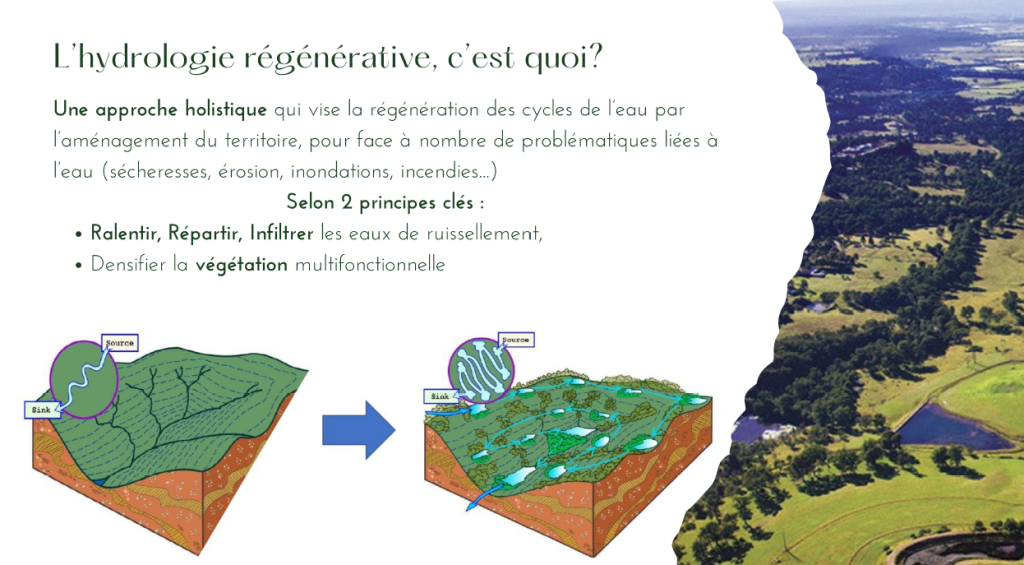The project
Context :
Drought conditions—whether climatic, hydrological, or agricultural—such as those observed in 2022 and 2023, are being significantly accelerated by climate change. However, these phenomena primarily highlight one key issue: the lack of water resilience in territories.
Many water-related issues (droughts, water shortages, floods, wildfires, erosion, etc.) are first and foremost symptoms of a degradation of the water cycles. Their origins can be traced to human activities, management, and land use—both past and present. Drawing on Falkenberg’s distinction, this degradation affects both major types of water: blue water (surface freshwater or groundwater) and green water (water contained in and circulating through soils and vegetation).
Water management challenges are traditionally addressed at the territorial level, often within watersheds that encompass multiple local authorities. In a similar dynamic to Territorial Food Plans, the challenges related to water resilience and climate change could be tackled through Territorial Water Cycle Regeneration Plans (TWCRPs). The ideal scale for implementing these plans lies at the level of municipalities, intercommunal groups, or metropolitan areas—not too small to remain effective, yet not too large for simplified governance.
Project Objective
The project aims to develop Territorial Water Cycle Regeneration Plans (TWCRPs) to contribute to the water resilience of territories. It will support the creation of a publicly accessible methodological guide and provide feedback from pilot experiences, helping any local authority interested in pursuing a water resilience strategy.
The planned actions include:
- Promoting regenerative hydrology approaches among territorial stakeholders;
- Defining, proposing, and implementing TWCRPs;
- Measuring and disseminating the impacts of these initiatives;
- Collecting and sharing knowledge at all levels.
Innovation at the Core of the Project: A Four-Pillar Approach
Each pilot territory will develop a tailored strategy to regenerate the water cycles within its watershed. Four main pillars are proposed to structure these initiatives, forming the foundation of a Territorial Water Cycle Regeneration Plan (TWCRP):
-
Water Cycle Regeneration Master Plan:
Conducting a comprehensive territorial assessment, followed by the development of a master plan incorporating hydrological and agroforestry components with a long-term vision. -
Territorial Dialogue:
A process that includes a capacity-building phase and a consultation phase to engage local stakeholders. -
Studies and Field Projects:
Conducting research, providing support, and implementing projects and works in the territory, aligned with the master plan. -
Monitoring, Measurement, and Promotion:
Measuring the impacts of TWCRPs on the water resilience of the territory using dedicated indicators. This pillar also focuses on promoting the initiatives and their effects, facilitating feedback sharing, and encouraging adoption by other territories.
These four pillars aim to establish a coherent and integrated approach to water cycle regeneration, ensuring long-term resilience and sustainability for local water resources.



 Monitoring of regenerative hydrology experiments applied to pilot sites and deployment on a regional scale
Monitoring of regenerative hydrology experiments applied to pilot sites and deployment on a regional scale